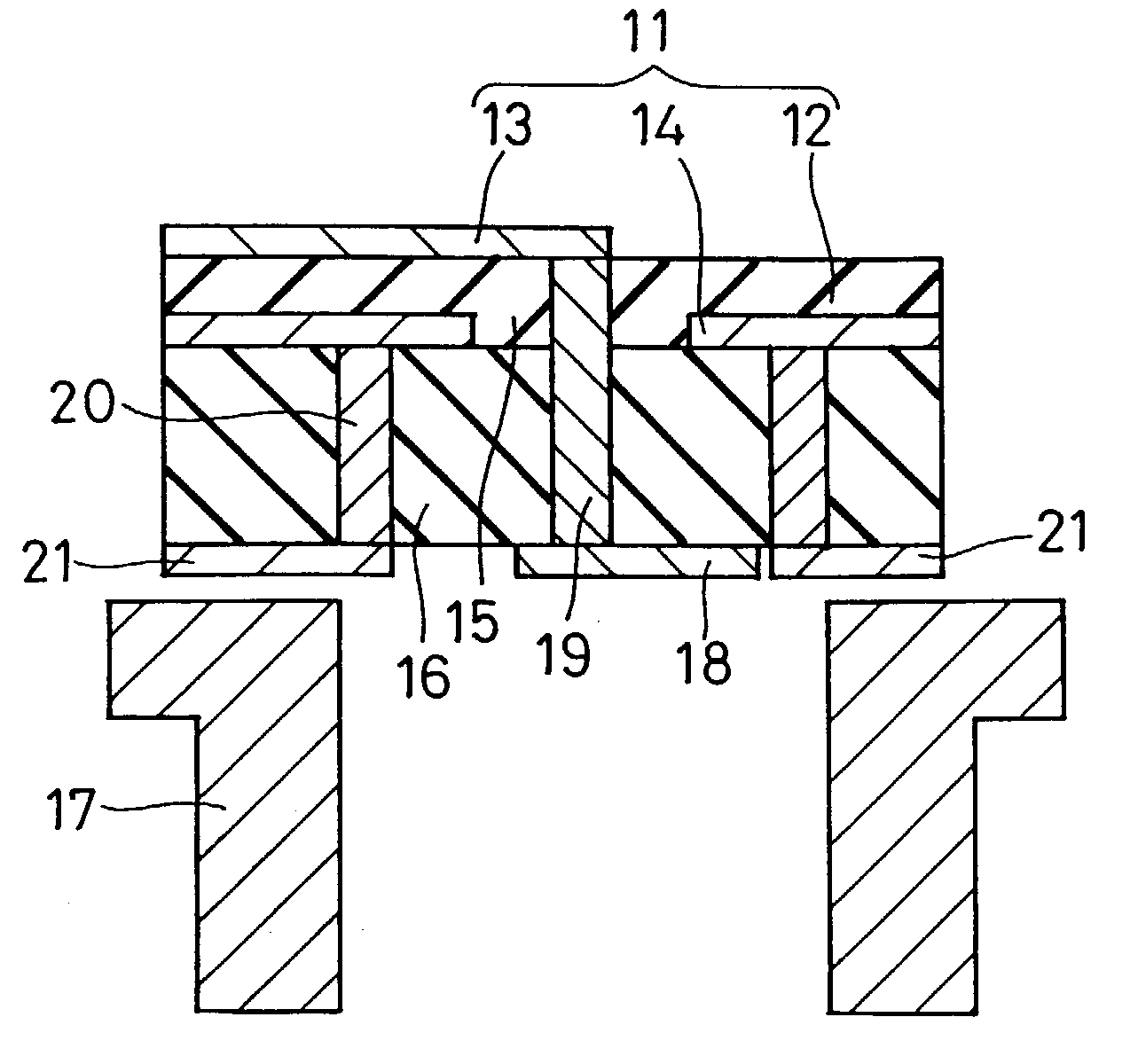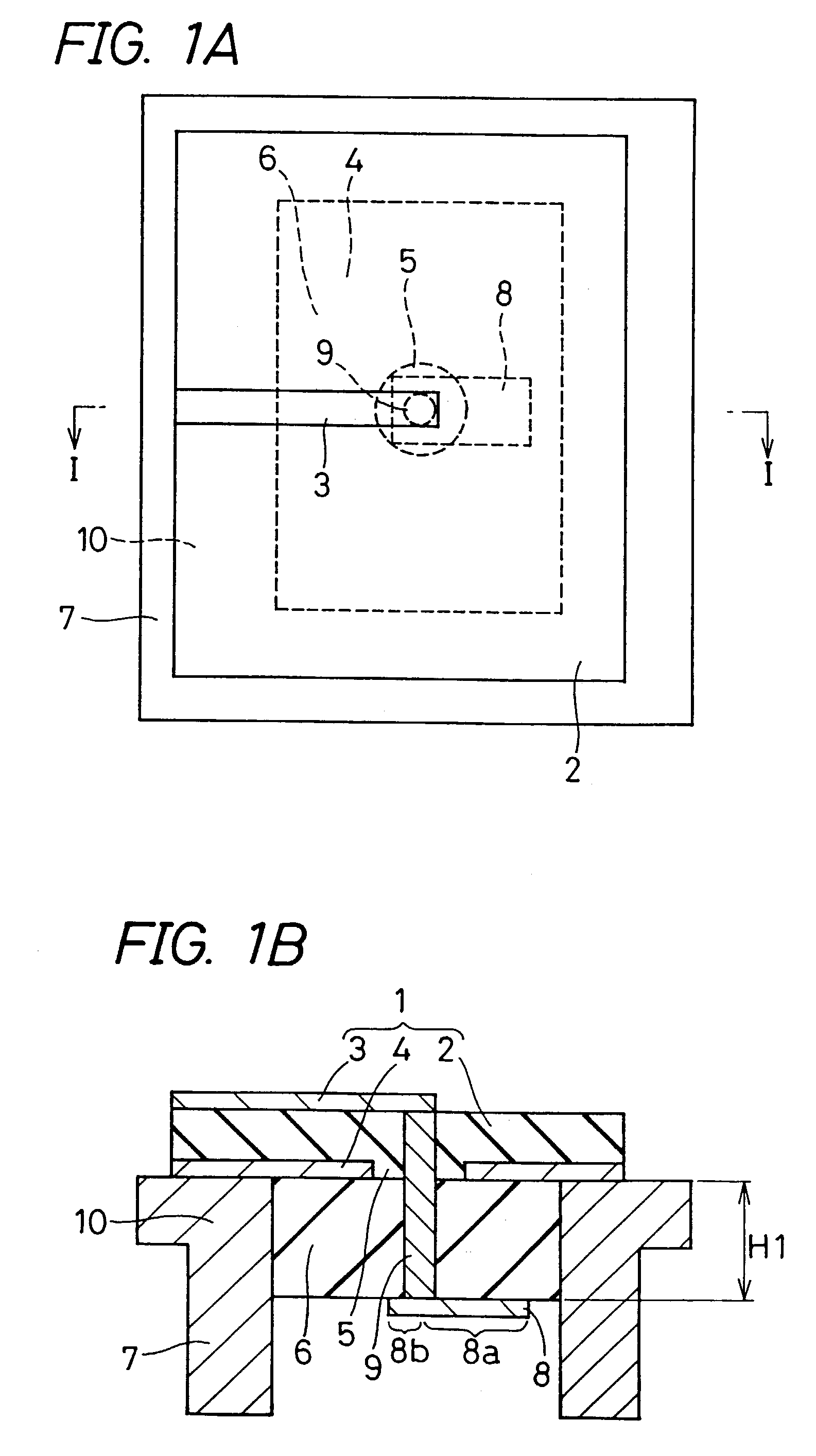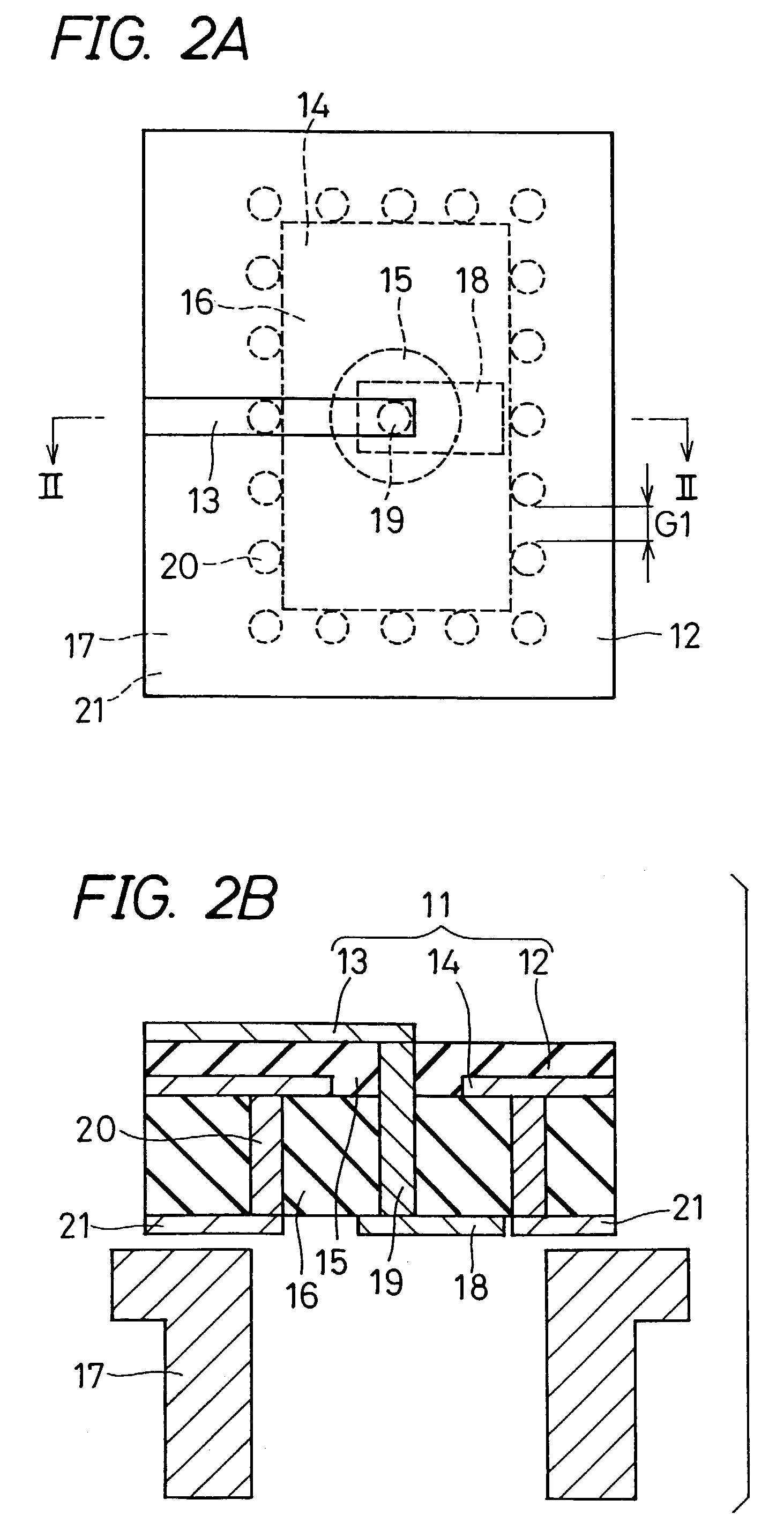High-frequency line-waveguide converter having the HF line terminated within an opening portion
- Summary
- Abstract
- Description
- Claims
- Application Information
AI Technical Summary
Benefits of technology
Problems solved by technology
Method used
Image
Examples
example
[0140]Next, the following experiments are conducted to confirm the effect exerted by the high-frequency line-waveguide converter embodying the invention.
[0141]At first, using an alumina-ceramics green sheet whose dielectric loss tangent is 0.0006 at 10 GHz after firing and a metallized paste for tungsten metallization, an evaluative substrate as shown in FIGS. 8A to 8C is fabricated by means of ordinary green-sheet laminating technique and simultaneous firing technique. Note that FIG. 8A is a top view of the evaluative substrate; FIG. 8B is a sectional view taken on the line VIII—VIII of FIG. 8A; and FIG. 8C is a bottom view.
[0142]After firing, nickel and gold plating is applied to the surfaces of the metallized layers formed on the top and bottom surfaces, respectively, of the evaluative substrate. Here, the high-frequency line-waveguide converter incorporated in the evaluative substrate is so designed that its corresponding waveguide is of a WR-10 waveguide for use in the W-band (...
PUM
 Login to View More
Login to View More Abstract
Description
Claims
Application Information
 Login to View More
Login to View More - R&D
- Intellectual Property
- Life Sciences
- Materials
- Tech Scout
- Unparalleled Data Quality
- Higher Quality Content
- 60% Fewer Hallucinations
Browse by: Latest US Patents, China's latest patents, Technical Efficacy Thesaurus, Application Domain, Technology Topic, Popular Technical Reports.
© 2025 PatSnap. All rights reserved.Legal|Privacy policy|Modern Slavery Act Transparency Statement|Sitemap|About US| Contact US: help@patsnap.com



